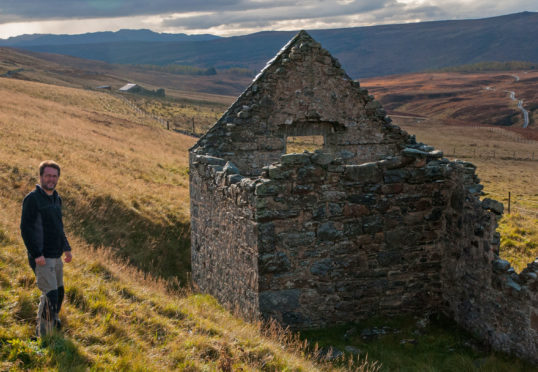A Moray student is embarking on research to unearth the fate of farms that were abandoned after the Highland Clearances.
Following the evictions in the 18th and 19th centuries, people were forced to move from traditional land managed by townships.
Instead, they set up on smaller plots that lay barren during the winter months in an attempt to continue living off the land.
However, many of them became unsustainable and quickly fell into ruin.
Now Stephen Worth, from Findhorn, will undertake a three-year research project to establish a scientific reason as to why the farms failed.
He said: “Farming practices in the north underwent major changes between the mid-18th and mid-19th centuries.
“Advances in science and technology, as well as changes in ideologies, led to the demise of communal agricultural systems managed by townships.
“Many people established their own farms in marginal, upland areas, which had previously only been used for grazing in summer.
“However, a large number of these failed and now lie in ruins.”
Ruined cottages and other farm buildings can still be seen spread throughout the glens in the north of Scotland where land that used to be farmed now lies barren.
Mr Worth, who is a PHD student at the University of the Highlands and Islands, decided to follow his passion for history and archaeology after retiring from a 38-year career in the RAF.
The 59-year-old intends to use soil sampling, surveys of the terrain, estate records and historic maps to gain an understanding of why the farms were unsustainable.
Mr Worth has been named as one of 19 recipients in Scotland of the Carnegie-Caledonian scholarship this year, which will cover his expenses for three years – he has described the opportunity as a “lifelong dream”.
He added: “Previous research has mostly been documentary but I hope to complement this by taking an interdisciplinary approach which also uses archaeological analysis.”
